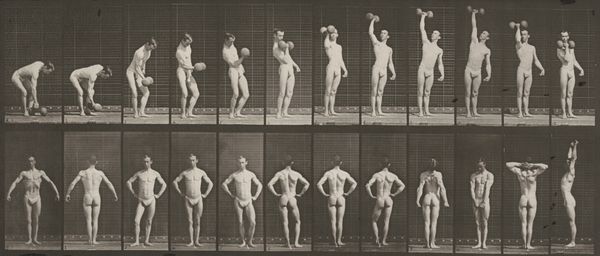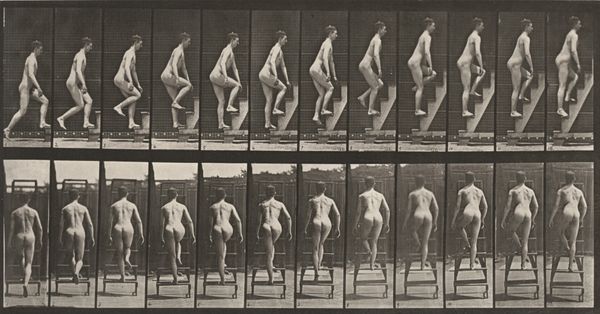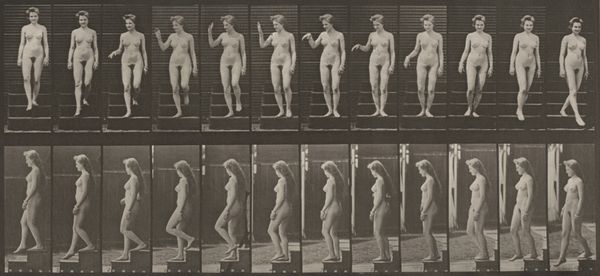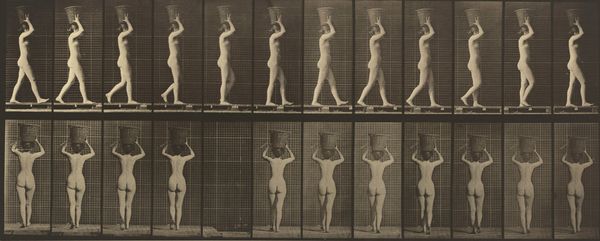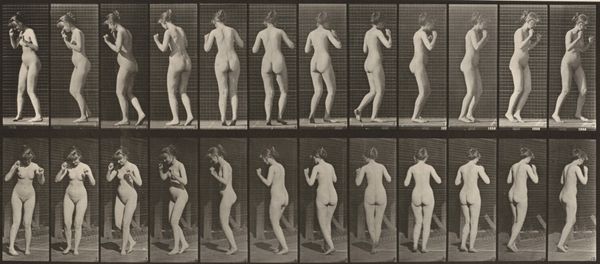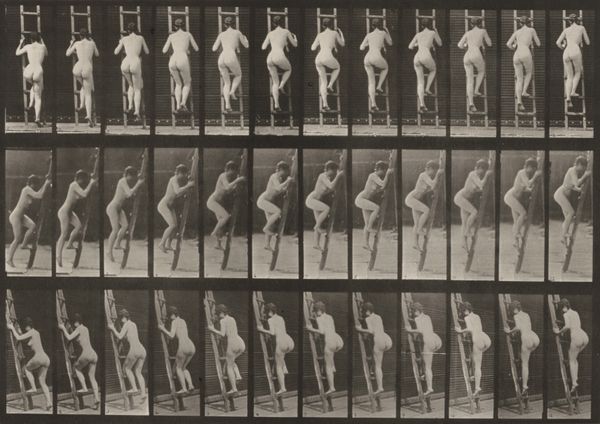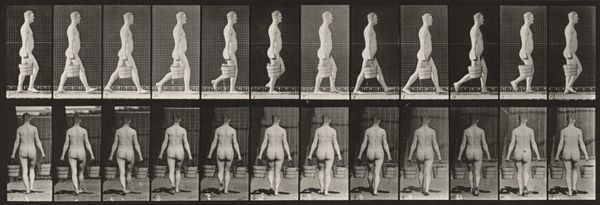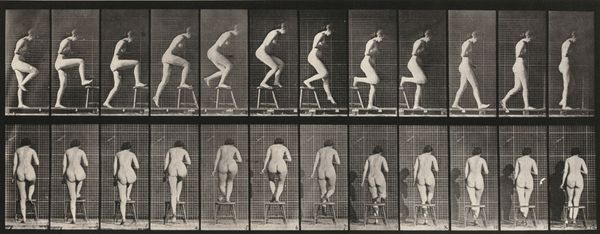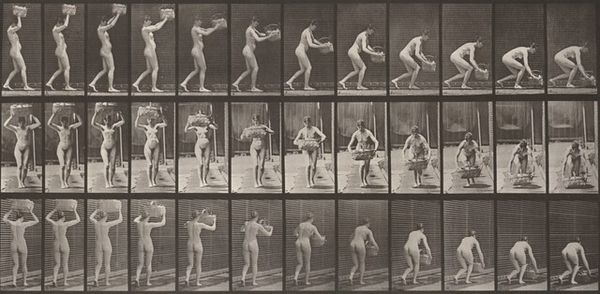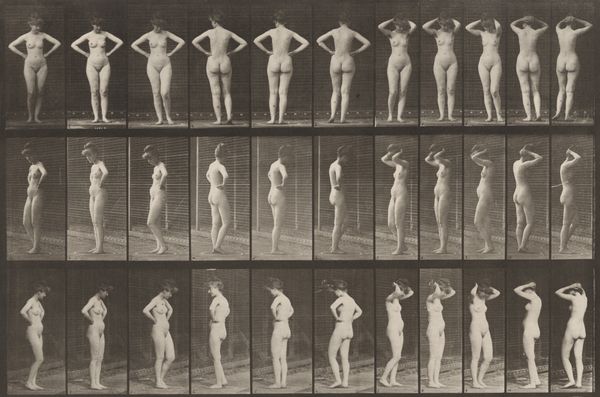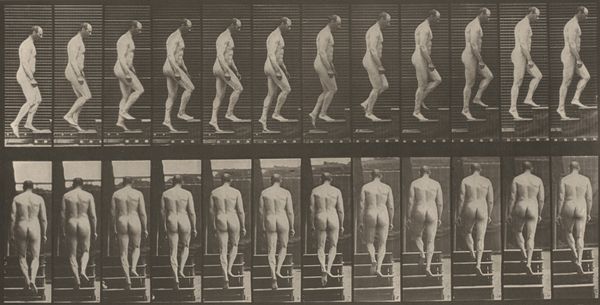
Plate Number 128. Descending stairs with hands clasped 1887
0:00
0:00
print, photography, gelatin-silver-print
#
portrait
# print
#
sculpture
#
photography
#
geometric
#
gelatin-silver-print
#
monochrome photography
#
history-painting
#
nude
#
realism
Dimensions: image: 19.15 × 38.1 cm (7 9/16 × 15 in.) sheet: 47.8 × 60.3 cm (18 13/16 × 23 3/4 in.)
Copyright: National Gallery of Art: CC0 1.0
Curator: This is Plate Number 128. Descending stairs with hands clasped, a gelatin silver print by Eadweard Muybridge from 1887. It is part of his groundbreaking series on human locomotion. Editor: My initial thought is how fragmented the action is, and yet it coalesces into a single, cyclical movement. Almost like a flipbook made still. Curator: Absolutely. Muybridge’s work here exemplifies the 19th-century scientific impulse to dissect and understand movement. We must consider how photography shaped not only art, but also scientific understandings of the human body. Editor: The repeated image reminds me of ancient friezes, continuous narratives capturing sequential events, although this photograph achieves scientific detachment rather than narrative. The naked body and the stairs hint at vulnerability and purpose, don't you think? Curator: A good point. Muybridge’s project, though ostensibly scientific, had deep cultural echoes. His imagery was immediately absorbed into artistic circles. The use of nudity and the reference to classical themes resonated with Victorian art academies that struggled to redefine their aesthetic principles using new mechanical media. Editor: There's a symbolic quality, too. Stairs, the descent, a gesture with clasped hands... these trigger archetypal references to ritual, both religious and societal. It also hints at self-control, a common 19th-century obsession in moral and social discourse. Curator: Interesting, considering how motion studies have had real legal and societal impacts. Muybridge was even involved in a famous divorce trial using his photographic motion analysis, which underlines the complex links between scientific progress, the societal impact of the image and personal affairs. Editor: True! Beyond just revealing the mechanics of movement, I can see how it served and disrupted specific viewpoints prevalent during his time. A lasting dialogue about motion, science, art and societal control seems to be its legacy. Curator: This one photographic plate really makes one consider the broad effects and repercussions an image can set in motion, so to speak!
Comments
No comments
Be the first to comment and join the conversation on the ultimate creative platform.
